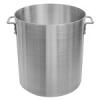Hello All, reaching out with what I'm sure is a common occurrence in food micro, but did not see it asked on this board. Here is the situation:
A food sample is tested for e.coli via petrifilm at a 10^-2 and 10^-3 dilution. The -2 plate (less diluted) shows no e.coli growth, but on the -3 plate (more diluted) there is a single e.coli colony. Our specification is that e.coli should not be detected in the sample. This is puzzling, because you would expect that a single colony on a -3 plate would be backed up by at ~10 colonies of e.coli on the -2. I would think that lab error would be the root cause of this single colony. However, I do know resampling in the face of detected pathogens is a sensitive issue. Would this case be considered unique from a regulatory perspective, where the spread of results from initial testing just don't seem to make scientific sense, so retesting would be in order?












